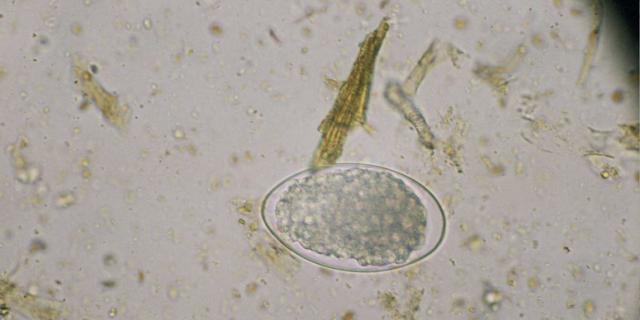If only we didn’t have to collect poo, but we do!!! Faecal egg counts can be done on individual samples or on a bulk sample (composite samples). Learn about when you might use one or the other.
A faecal egg count (FEC) is a measure of the number of egg-laying adult worms in an animal’s gut. It mostly doesn’t show what species of worms are there.
Faecal egg counts can be used to help assess:
- Whether sick sheep or young cattle are sick because of worms.
- How quickly young animals are becoming re-infected after a drench (how contaminated is the pasture they’re grazing?).
- Whether sheep or calves need a drench or not.
- Whether a drench has worked or not (there shouldn’t be eggs present after drenching).
Individual faecal egg counts
To do these we collect 10+ poo samples and they are processed separately, to give a FEC in eggs per gram (epg) from each animal.
Advantages – a guide to the distribution & range of FECs within a mob:
- A pooled sample or average won’t give as much detail.
- In older lambs/calves and in adult animals, the 80/20 rule often applies: ‘80% of the eggs come from 20% of the animals.
Disadvantages – cost and time to process.
FECs with the same average epg but different pattern of individual counts
| Mob ID | Mob A | Mob B | Mob C |
| 0 | 400 | 2,500 | |
| 0 | 550 | 0 | |
| 5,000 | 200 | 1,200 | |
| 0 | 450 | 0 | |
| 0 | 850 | 200 | |
| 0 | 350 | 550 | |
| 0 | 250 | 200 | |
| 0 | 650 | 50 | |
| 0 | 850 | 0 | |
| 0 | 450 | 300 | |
| Mob average | 500 | 500 | 500 |
Composite faecal egg counts
To do these we collect 15–30 poo samples. A standard volume is collected from each dung pat and the samples are thoroughly mixed together. One or more subsamples from the bulk mixed sample is processed and read as an average FEC for the mob.
Advantages – speed and reduced cost per sample read. Automated systems are available for DIY on-farm composite counts. This can mean more frequent monitoring – its easy to see whether FECs are tracking upwards or downwards, and easy to run comparisons between mobs.
Disadvantages – lack of detail. The average result can be skewed by a number of very high or very low values. A way around this is to do repeat counts (say 3) on the same bulk sample, and increase the frequency of monitoring to see whether FECs are rising or falling.
Cattle Faecal Egg Counts
In cattle there is less of a relationship between FECs and total worm count. However, calf FECs do tend to follow a similar seasonal pattern – rising to an autumn peak and remaining moderate-low over winter.
Using 10 individual samples is possibly more important for cattle. A mean egg count of 50 epg (‘low’) could contain a number of counts which have greater significance than the same counts in sheep.

Picture: The eggs of most of the stomach and intestinal worms look similar to each other. They are termed ‘strongyle’ eggs.